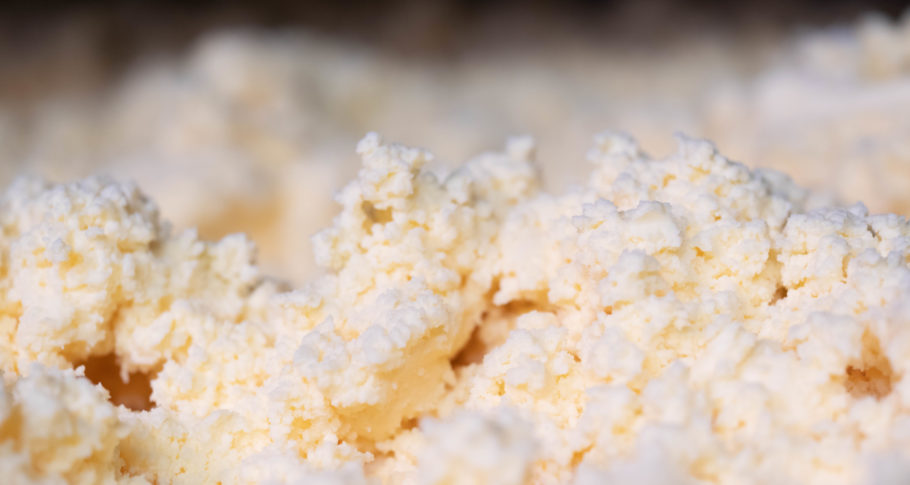100% made from milk
Contains only milk fat and milk enzymes
22 litres of milk
= 1kg of butter
The manufacture of butter
Butter is obtained by churning the cream from the milk.
After pasteurisation, the cream is separated from the milk using a skimmer. This cream will then be used to make butter. To do this, it is matured. This is done by introducing lactic ferments that will make it thicken, acidify and take on its characteristic taste. The cream matured in this way is beaten vigorously. This is churning, a mechanical operation that leads to the formation of yellow grains that, as they agglomerate, will form butter.
Working the butter is the final step in obtaining a smooth and homogeneous texture.
The yellow colour of butter is due to the presence of carotene, which is naturally found in the plants eaten by the cow and passes through the milk. Due to its high fat content (82%) and low water content, butter can be kept in the refrigerator for several weeks.
Butter has been made in this way for more than five thousand years. Skimming, churning and working were simply carried out in small manually operated wooden churns. Today, churns are larger and more automated; the vast majority of them are butter making machines for standard butter. These tools make it possible to produce larger quantities while respecting the same process under the watchful eye of a master butter maker.
Butter, an essential part of French cuisine
Butter is an important ingredient in French food. It softens flavours and enhances the taste of food. Chefs like to flavour it, compose with it, dissolve it, colour it, etc.
Milk, several butter types
- Raw butter: Raw butter is obtained exclusively from raw cream that has not undergone any heat treatment.
- Clarified butter: Butter contains 82% fat but also other components such as mineral salts, a sugar called lactose, proteins, vitamins, and water. To separate the fat from these other components, it is heated to 30° to liquefy it so it can be “skimmed” and the white foam that forms can be eliminated. By clarifying the butter, it no longer burns during cooking. Clarified butter contains 99% fat
- Spreadable butter: This butter has been mechanically processed so that it remains flexible in the cold and can be spread easily. The achievement of this texture lies in the art of mixing different dairy lipids that have different melting points. No chemical additives are used to make it.
- Sweet, semi-salted or salted butter: After churning the cream, the butter is mixed with a precise proportion of salt. Traditionally, butter was salted to preserve it better. Today, salt is used as a flavour enhancer. Salted butter contains 3% salt, semi-salted butter between 0.5 and 3% salt. The name ‘sweet butter’ helps to distinguish products to which no salt has been added.
- Fine and extra-fine butter: Extra-fine butter is made with pasteurised cream from processed milk within a maximum of 72 hours after collection. Fine butter can contain up to 30% frozen cream.
- Low-fat butter: This term is regulated. The fat comes exclusively from milk. It contains between 41% and 65% fat. Below 41% fat, the product can no longer be called butter.
- Churn butter: it is made in a churn, unlike standard butter made continuously in a butter making machines.
